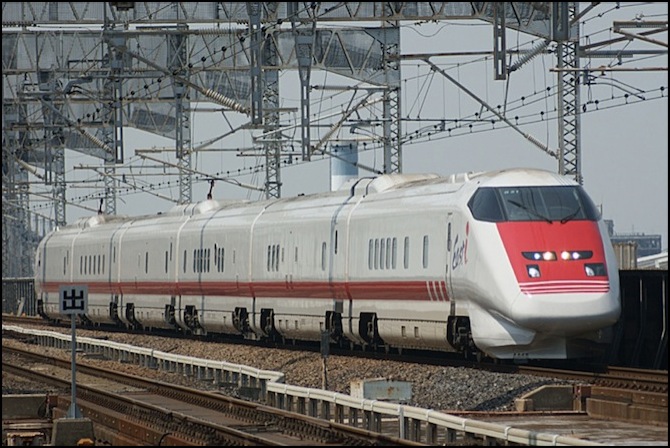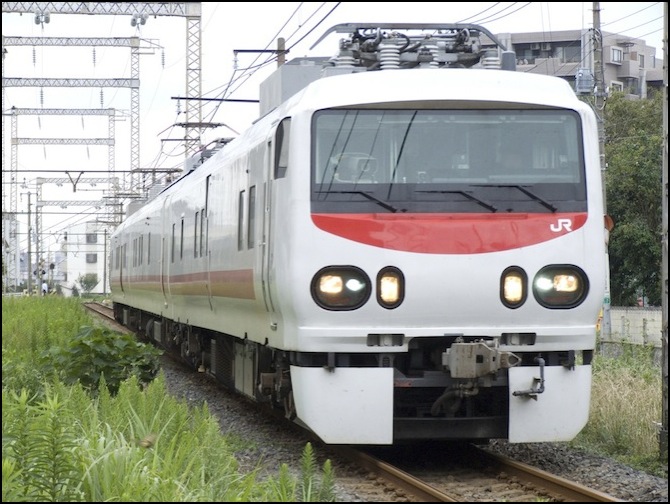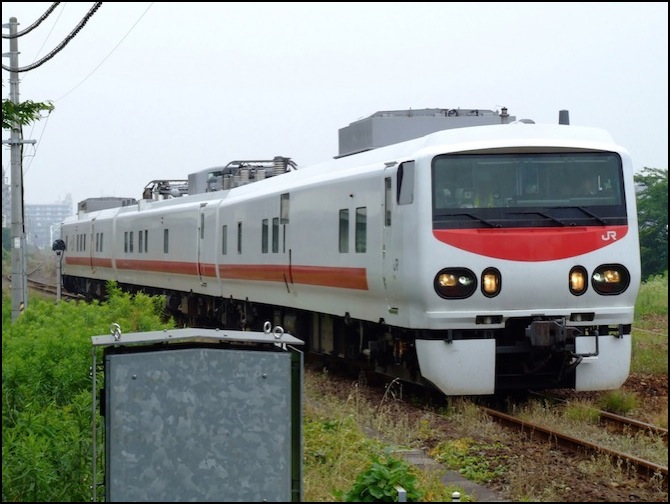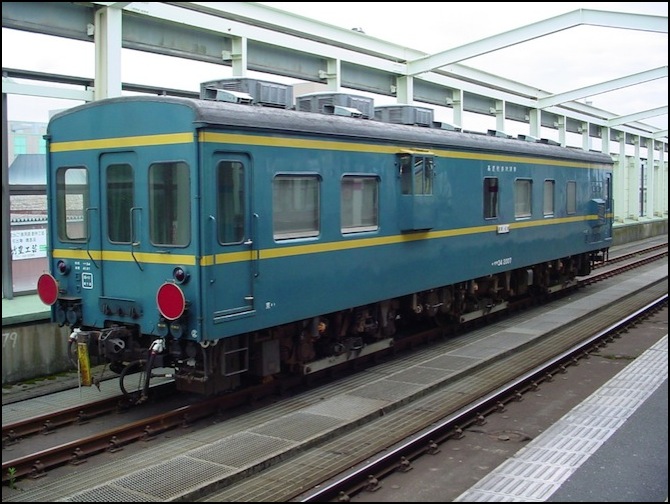JR East Inspection Trains
JR East maintains three track-inspection trains. These are:
- E926 East-i Shinkansen, for electrified standard-gauge lines
- E491 East-i E, EMU for electrified narrow-gauge lines
- E193 East-i D, DMU for non-electrified narrow-gauge lines
All three sets are equipped to perform measurements on track, power, signaling, and other systems while operating at normal track speed, to allow them to mix in with ordinary trains without disrupting schedules.
Note: most of the links below are to Japanese pages, as there is little written about these trains in English.

E926 East-i Shinkansen (2008)
Photographer: Sui-setz
The E926 is a six-car E3 Shinkansen set equipped with test and measurement equipment. It is used on the Shinkansen and mini-Shinkansen lines operated by JR East (i.e., those north and north-west of Tōkyō, but not the Tōkaidō Shinkansen to the south-west of Tōkyō, which is operated by JR Central). Specifically, it is used on the Tōhoku, Jōetsu, and Nagano Shinkansen, and the Yamagata and Akita Mini-Shinkansen lines. It replaced the use of the E925 “Dr. Yellow” inspection train by JR East in 2001.
Specifications:
Type: E3 Shinkansen
Introduced: August 2001
Top Speed: 275 kph on Shinkansen lines, 130 kph on Mini-Shinkansen lines
Power: 4.8 MW (6,437 hp)
Source: 20 kV / 25 kV AC, 50 Hz catenary

E491 East-i E EMU (2007)
Photographer: LERK
The E491 East-i E EMU is a three-car EMU set equipped with test and measurement equipment. It is used on electrified narrow-gauge lines operated by JR East. The train set is based on the E257 Series, but heavily customized. It replaced an earlier 443 Series inspection train dating from the JNR era.
Specifications:
Type: based on E257
Introduced: June 2002
Top Speed: 130 kph
Power: unknown (2 motor car, 1 trailer car)
Source: 1,500 V DC catenary

E193 East-i D DMU (2007)
Photographer: LERK
The E193 East-i D three-car DMU set equipped with test and measurement equipment. It is used on non-electrified narrow-gauge lines operated by JR East. The train is also used to inspect lines for JR Hokkaido and the non-JR Kanagawa Seaside Railway Company as well as the Yamagata Railway and Yamagata Railway Furawa. Note: it has pantographs on one car to allow it to inspect isolated electrified lines, but does not use these for powering the train itself. It replaced an earlier 191 Series inspection train dating from the JNR era.
Specifications:
Type: appears to be based on the E257 also
Introduced: 2003
Top Speed: 110 kph
Power: 4x 450 ps (metric horsepower, equivalent to 1,320 kW total or 1,776 hp)
Source: Cummins Diesel

JR East MaYa 34 2007 at Tottori Station (2006)
Photographer: スイッチバック (switchback)
The MaYa (マヤ) 34 was a test car designed to be carried in a locomotive-hauled passenger train to measure track geometry while in motion. The car was designed for long-term testing use, and includes a bedroom and its own generator for power. Ten of them were built between 1959 and 1981 for JNR, and divided among the JR Group companies in 1987. According to Japanese Wikipedia JR East retains one (apparently stored out of service, confirmed as of 2010 by this blog post) while JR Kyushu and JR Hokkaido have two others still in service. All of the others were scrapped between 1998 and 2008, except for number 1 (aka 2001) which was scrapped in 1987. Micro Ace makes a model of number 2002 in the JR East paint scheme (which it may only have worn between a rebuild in the 1998 or 2002 timeframe and its scrapping in 2004). However the surviving cars do not wear that paint. The JR Kyushu remains in service was was used as recently as May 2011 (per railf.jp blog post).




